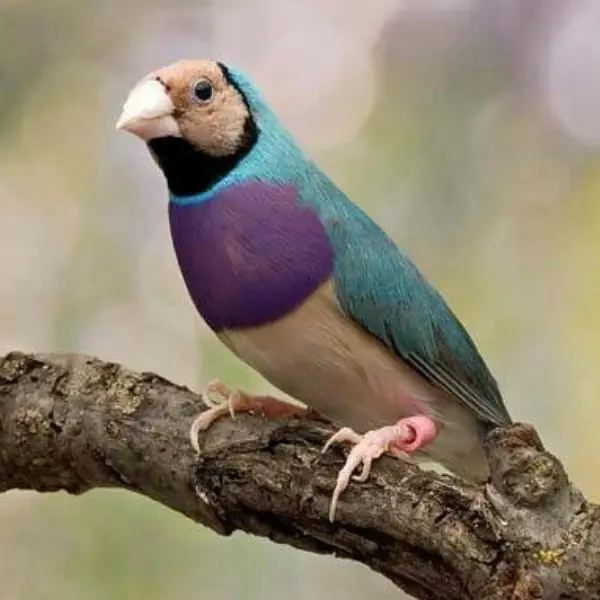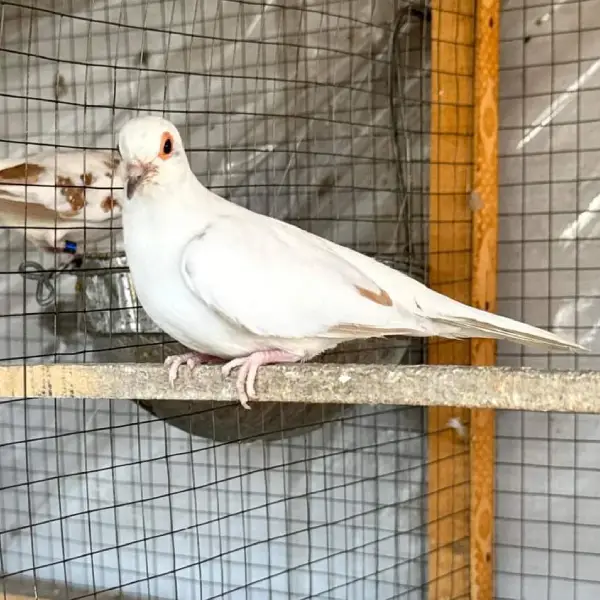Free shipping order over 20,000
Albino Shaft Tail
₨ 22,500 Original price was: ₨ 22,500.₨ 20,000Current price is: ₨ 20,000.
-
-
-
- Scientific Name: Poephila acuticauda
- Size: Approximately 12-15 cm (4.7-5.9 inches) in length.
- Color: The albino variety is characterized by its all-white plumage due to the lack of pigmentation. This is a genetic mutation that results in the absence of melanin, which gives the normal Shaft Tail its usual brown and gray coloration.
- Beak: Bright pink or reddish, small, and conical, well-suited for seed eating.
- Eyes: Red, a common trait in albino animals.
- Legs and Feet: Pale pink or flesh-colored.
-
-
Share
Share on facebook
Share on email
Important Keys:
Habitat
- Distribution: Native to northern Australia, particularly in regions such as Queensland, Northern Territory, and parts of Western Australia.
- Environment: Typically found in open grasslands, savannas, and woodlands. They prefer areas with access to water and plenty of grasses, which provide both food and nesting materials.
Diet
- Primary Food: Seeds, especially from grasses, are the main diet. This includes seeds from native Australian grasses as well as those from cultivated crops.
- Supplementary Food: Small amounts of insects, particularly during the breeding season to provide additional protein.
- Feeding Behavior: Like the Zebra Dove, they forage primarily on the ground, picking up seeds and small insects.
Breeding
- Breeding Season: Breeding generally occurs during the rainy season when food is more abundant.
- Nest Location: Nests are built in dense shrubs or low trees, usually in colonies. They use grasses and other plant materials to construct a tightly woven nest.
- Egg Quantity: Clutches typically consist of 4-6 eggs.
- Incubation Period: About 12-14 days.
- Fledging: Chicks fledge around 18-21 days after hatching.
Lifespan
- In the Wild: Typically around 5-7 years.
- In Captivity: Can live longer, up to 10-12 years or more, with proper care.
Behavior
- Social Structure: Albino Shaft Tails, like their non-albino counterparts, are social birds often seen in flocks. They are known for their peaceful and sociable nature.
- Vocalization: Their vocalizations are typically soft, high-pitched chirps, which they use to communicate within their flock.
![]()
Be the first to review “Albino Shaft Tail” Cancel reply
Related Products
-
-42%
Fawn Java Sparrow
₨ 12,000Original price was: ₨ 12,000.₨ 7,000Current price is: ₨ 7,000. -
-70%
Zebra Finch
₨ 5,000Original price was: ₨ 5,000.₨ 1,500Current price is: ₨ 1,500. -
-25%
Silver Gouldian Finch
₨ 24,000Original price was: ₨ 24,000.₨ 18,000Current price is: ₨ 18,000. -
-20%
Common Gouldian Finch
₨ 12,500Original price was: ₨ 12,500.₨ 10,000Current price is: ₨ 10,000. -
-43%
Blue Gouldian Finch
₨ 35,000Original price was: ₨ 35,000.₨ 20,000Current price is: ₨ 20,000. -
-8%
Albino Cut-throat Finch
₨ 65,000Original price was: ₨ 65,000.₨ 60,000Current price is: ₨ 60,000. -
-20%
White Zebra Dove
₨ 43,750Original price was: ₨ 43,750.₨ 35,000Current price is: ₨ 35,000. -
-40%
Red Pied Dove
₨ 10,000Original price was: ₨ 10,000.₨ 6,000Current price is: ₨ 6,000.
Sign Up for Exclusive Birds Care Tips and Offers from Phool Panchi
Company links
Category
Contact
© 2024 Phool Panchi | Developed By v3Studio













Reviews
There are no reviews yet.